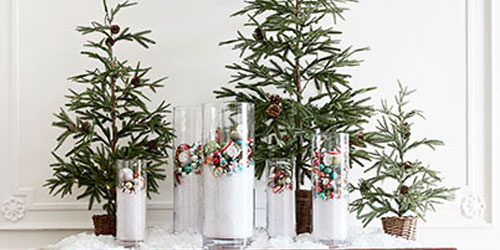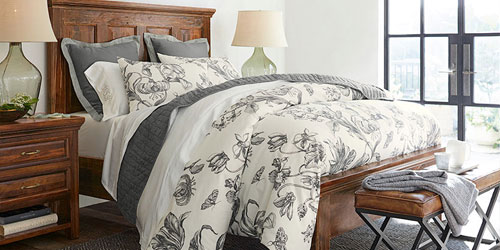Tips & Tricks: How to Wash a Pillow

Did you know feather pillows can—and should—be washed regularly? Although they don’t need to be cleaned as frequently as your bedsheets and pillowcases, you may want to give them a good soak every three to six months. Doing so will remove odors and keep bacteria and mold from growing.
If you don’t already know how to wash down pillows, the thought of throwing them in the washing machine might be a little scary. Thankfully, you can avoid unwanted damage and keep your bed pillows or decorative pillows clean by following these helpful tips and tricks from us at Pottery Barn.
Read Instructions
Before putting a pillow in the wash, always remove the pillowcase or sham and take a look at the care tag. It will tell you everything you need to know about how to wash a pillow, including whether or not dry-cleaning is necessary.
Use the Delicate Cycle
Most people who don’t know how to wash feather pillows are surprised to learn they can usually be washed in a regular washing machine. The delicate setting is gentle enough for most pillows, as long as the tag doesn’t specifically state that dry-cleaning is needed.
Avoid Agitators When Possible
It is best to wash pillows in a washing machine without an agitator. If your machine has an agitator, you may want to wash your pillows by hand or place them vertically into the machine tub. When pillows are placed in the tub vertically instead of horizontally, they are less likely to become tangled up in the agitator during the wash cycle.
Balance the Washing Machine
To keep your machine from becoming unbalanced, try to wash two pillows at a time, making sure they’re loosely placed in the machine. This is especially important for top-loading machines that are more likely to shake and agitate too harshly when washing an unbalanced load.
Use Minimal Detergent
After placing your pillows in the tub, add a small amount of liquid detergent as the machine is filling with warm water. You may want to avoid powder detergent because it can leave a residue.
Add an Extra Cold-Water Rinse
Detergent tends to become trapped in pillow filling, so you may find it helpful to add a cold-water rinse to your wash cycle. Remember to put your pillows through another gentle spin cycle as well to remove excess water.
Never Wring Your Pillows
If you aren’t familiar with how to wash a pillow, you may think you need to wring it out after the wash cycle to remove excess water. However, doing this can damage your pillow and cause it to form clumps. Instead of wringing it out, put it directly into the dryer after washing. Or, you might prefer to fluff your newly-washed pillow by hand and hang it up to dry on a coat rack or wall hook.
Tumble Dry on Low
If you opt to tumble dry your pillows, consider drying them on a low heat setting. You may also want to interrupt the drying cycle frequently to fluff and turn the pillows by hand. Adding a few dryer balls or clean cotton socks stuffed with tennis balls is a great way to inhibit clumps from forming.
If your pillows still feel damp after drying, try adding one or two clean bath towels into the machine and start the cycle all over again. Dry towels can soak up excess moisture from your pillows and speed up the drying process.
If your pillows develop a musty scent after washing and drying, the culprit is most likely residual dampness. Consider placing musty pillows in the sun for a few hours to make sure they dry out completely before returning them to your bed.
Spot Treat
Now that you know how to wash down pillows, consider spot-treating them between washings to quickly remove stains and odors. To begin, push the down filling away from the surface you will be treating so it doesn’t get wet. Then, add a small amount of warm water mixed with mild detergent to the area with a soft sponge.
Gently blot the stained area with your soap solution, rather than scrubbing it. When you have successfully removed the stain, blot it dry with a clean towel. This spot-treating method can also be used to keep comforters clean between washings.
Protect Your Pillows
You can keep your bed pillows clean and protected by keeping them in protective pillowcases and only using them indoors. If you frequently take your pillows outdoors when you want to relax on your hammock or patio furniture, it may be time to invest in some high-quality outdoor pillows that are specifically designed to withstand outdoor use.


